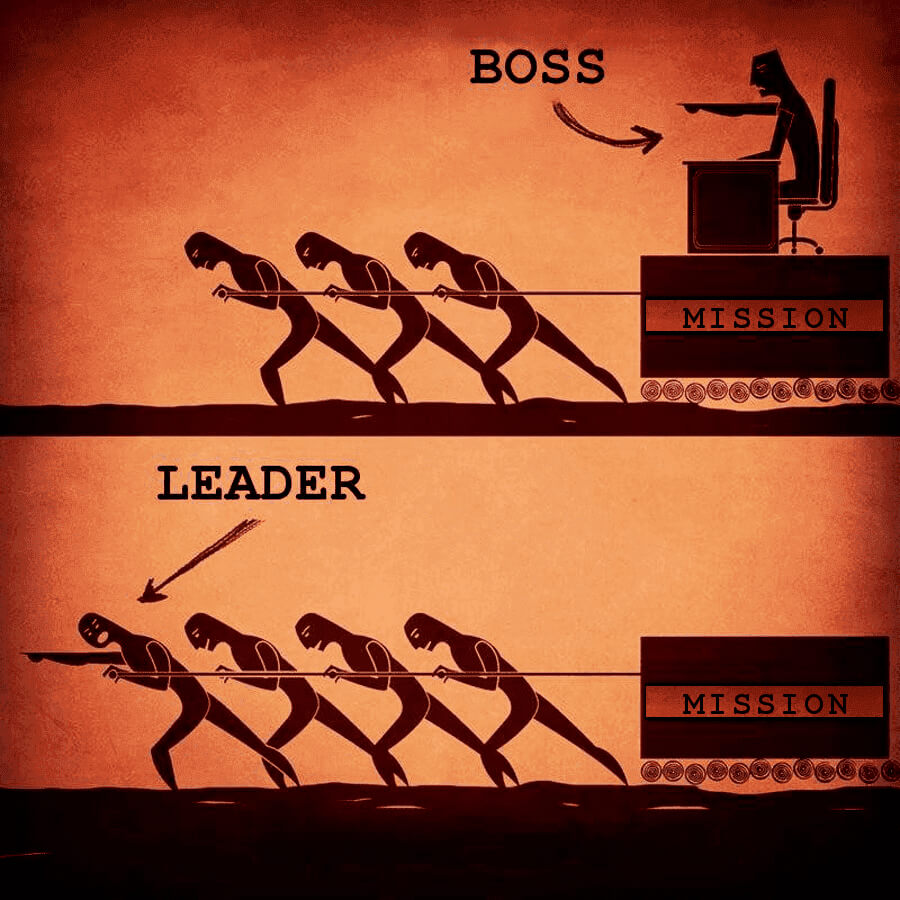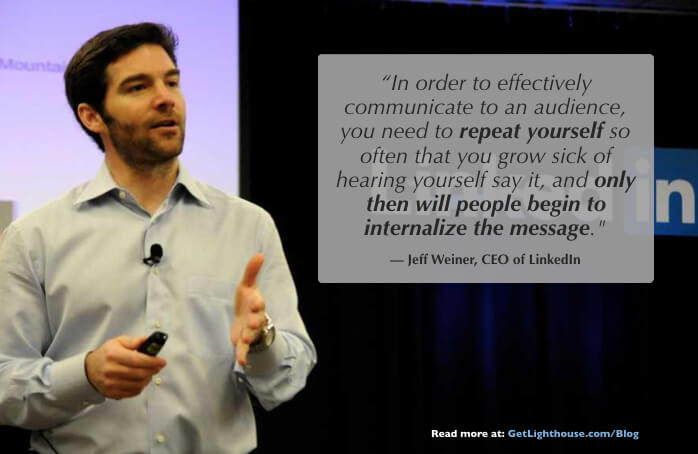"Why won't they do this???"
"How has there been no progress made on this?"
"Why is this still happening?!"
"What will it take to get team buy in to this and change?!?"
If you've ever tried to get a group of people to change, you've felt this exasperation. This can be particularly hard when you're trying to get team buy in to change a habit, start a new one, or improve a process that everyone knows is broken.
To solve this, maybe you've already tried delegating to someone on your team, or had a lot of conversations and meetings about it. Despite all the talking and thinking about it, nothing seems to be getting done.
However, before you give up on getting buy in from your team for an important change, there are several effective strategies that you can implement. In this article, we will explore proven methods that you can use to achieve team buy in, even when the change feels daunting or unpopular.
Whether you're a manager, team leader, or simply a team member with a great idea, these techniques will help you to effectively communicate your vision and show you how to get buy-in from your team for your change.
Table of Contents:
- Why you're Struggling to Get Team Buy in and action
- How to use a Grand Gesture to Get Team Buy in
- Putting it all together
Why you're Struggling to Get Team Buy in and Action
When you're in the weeds, stressed, and juggling a million things, it's easy to get annoyed by things that "just aren't changing.” You can talk to your team about things until you're blue in the face, and sometimes nothing happens.
Why is that?
Typically, when you look at the big picture you'll see that there's a common set of reasons why you're struggling with how to get buy in from your team:
- Blame: No one wants to take it on, because if it doesn't work, they take the L.
- Authority: You may want to assign the problem to someone (or a team) to solve, but are they empowered to actually make the necessary changes?
- Agreement: Does your team agree it's an important problem? Do they see why it's a big problem now and will only get worse?
- Pressure: If your team has other major projects and tasks to complete, your "pet project” may be put off indefinitely.
- Priority: You may say it's important, but do your actions show it's the case?
And these are just a few of the reasons you could be struggling with team buy in. You can likely think of even more.
So what do you do? How do you get team buy-in?
When you're faced with an important change that's not happening, it's time for you to step up.
While all the talk, instructions, and requests in the world may feel like leadership, often times, it's making a grand gesture yourself that provides the momentum your team really needs.
Today, we look at why that is, and how you can do it with your team.

How to use a Grand Gesture to Get Team Buy in to Make an Important Change
The boss vs. leader image above is one of my favorites. It captures in such a simple way what leadership is often about. You have to be willing to roll up your sleeves and be a part of the solution just as much as you need to think about the big picture and strategy.
This is one of many reasons why founders have so much credibility in their businesses. Everyone knows this person has been there since the very beginning when things were hard, uncertain, and challenging.
However, you don't have to have all the credibility in the world to start leading your team through change. Whether you have been there from the start or not, when you find you're stuck trying to get team buy in on something, the below tactics will help you get better results.

1) Show them the way
One of the biggest reasons your team may resist a change you ask for is fear: of the unknown, of the consequences of failure, or of looking dumb.
This is why it's so important for you to step up and get your hands dirty. As Nelson Mandela says, "take the front line."
If people do not feel confident in the path forward, or that they have the authority to complete the changes you want to see, then your leadership is critical.
When they see you fearlessly taking on the change, it's easier for them to be confident following. Otherwise, it can look like you're delegating to protect yourself and setting someone else to take the fall.
This is why the legend of so many great leaders that outlast their lifetimes have stories of leading others from the front:
- Martin Luther King literally walked at the front of many marches for equality.
- Gandhi not only lead the march to the sea to protest British salt taxes and restrictions, he literally went to the sea to pick up natural salt in protest.
- Great generals through the ages have led from the front like Julius Caesar, Hannibal, Ramses II, and Alexander the Great.
When you step up and show your people a plan that you're involved in enacting, they're much more likely to buy in and believe in you (especially when the stakes are not as high as wars or national protests).

How you can apply skin in the game to your buy-in strategy
In Nassim Taleb's book, Skin in the Game, he explains how true credibility comes from having a share of the upside and downside of a decision or piece of advice you give. Only in feeling the consequences of your ideas and suggested actions for others are you likely to be correct.
Throughout the book he shares example after example of people who make statements, claims, or proposals that fail because they do not fundamentally understand the system they're trying to change or predict.
Taleb's favorite group to critique is the academic economists who don't understand how the world works outside of their safe, simulated university environments. They're an extreme case of an idea that affects us all.
By getting directly involved to show your team the way, you will have skin in the game. Once you do, the success or failure of the initiative is on you as much as those you delegate the tasks to.
You'll also be close enough to the action to see what's really happening. You can then help make adjustments when you discover hidden problems and challenges you didn't plan for.
Further Reading:
Need more ideas on how to show your people the way and work along side your team? Start here:
- Learn how to ask for team feedback, so you can better connect with them and learn how you can do your part to help them
- Discover how to improve self awareness to better recognize when your team wants you to roll up your sleeves and lead the way.
2) Lead by example
A leader should never ask their team to do something they wouldn't do themselves.
Depending on how much trust and respect you have built up, you may be tested by your team. If they don't believe in you, they are unlikely to listen to you. You won't get the team buy in you want, nor the results you're aiming for.
A great example of this is from Season 5 of HBO's Silicon Valley. When Richard, the CEO, is walked out on after giving a speech to his company that is largely from unhappy acquisitions, he makes a great effort of his own.
As you'll see in the video above (warning: some strong language), by rolling up his sleeves and doing the work he was asking of others, he earned their respect and got team buy-in.
The example you set dictates not only what standards your team will live up to, but also the level of effort they'll put in.

Learn from sports dynasties
In Sam Walker's book, The Captain Class, he studies the greatest sports dynasty around the world. These are teams that sustained greatness often for over a decade across a variety of sports including rugby, football, and basketball.
As Walker looked for patterns in what set these dynasties apart, he noticed an essential pattern: a leader who set an incredible standard and made grand gestures.
One such example was from the 1970s Pittsburgh Steelers that won 4 Super Bowls in a 6 year span behind an unstoppable defense nicknamed, "The Steel Curtain."
Lambert set the tone by being the toughest guy on the field and not letting anything stop him. He played with no front teeth, wasn't afraid to call out even the best players on the team, and was the team's enforcer when needed. Lambert wouldn't even let team staff clean blood stains off his jersey in games, so that everyone knew he bled for the game.
Luckily the workplace isn't quite so brutal, but the lesson is the same: a heroic effort gets noticed and respected.
This is why the saying goes, leaders eat last. It's why good leaders are usually the last to leave at the end of the day, and great CEOs will even "take out the trash".
What if you can't do what you're asking them to do?
If you can't do what you're asking others to do whether due to experience, skill, or strength, consider:
- What can you do to help them? Even being present and buying dinner can make a big difference.
- How can you make their lives easier? Maybe you can't write the code, or make the sales calls, but you can roll up your sleeves and make sure they have everything they need without interruptions, distractions, or tedium.
- How can you show your work? If you're making major efforts in other areas, find subtle (and not so subtle) ways so they see you're doing your part like giving updates on progress and explaining what you're doing so they appreciate the difficulty of your work, too.
As is the case in many of the things we explain on the Lighthouse blog, the most important thing is being genuine. If you show you genuinely care, people will notice.
Meanwhile, if you try to draw attention, and want a gold medal for doing a few dishes, they'll also notice...for the wrong reasons...and resent you.
Further Reading:
Looking to understand more about how your example matters and helps you get team buy-in? Start here:
- The great company culture of your team is set by your example as we explain here.
- If you are interested in changing your team culture, it starts with you.
- Learn how Theo Epstein turned the Chicago Cubs into winners by changing the culture.

3) Use the power of repetition
One of the biggest mistakes inexperienced and poor leaders make is saying things once and thinking it's enough. Whether they do not understand the value of repetition, or goes so far as resenting they have to repeat themselves, they are set up for failure.
The only way for ideas to sink in with your team is to regularly repeat yourself and your ideas.
Now, this doesn't mean you stand over someone with a megaphone and say the exact same phrase over an over again. That's a childish straw man.
Instead, repetition is about looking for opportunities to repeat yourself in a variety of ways. This is especially important when thinking about how to get team buy in.

Get creative in your repetition
Professors Tsedal Neely of Harvard and Paul Leonardi of Northwestern studied managers in real workplace environments to see how effective repetition really was. What they found was a simple, powerful truth:
"Managers who were deliberately redundant moved their projects forward faster and more smoothly."
In practice, this means finding simple, diverse ways to be repetitive effectively:
- Talk about it, then send a clarifying email to your team member.
- Make it an agenda item everyone sees, then discuss it in detail in a meeting.
- Highlight the importance of something you want to see happen again by giving praise.
While at first it may feel a little awkward repeating yourself, as you start to see the impact it will make it easier to develop the habit of repetition going forward.
Using repetition for team buy-in
Telling your team once that something is important is often not enough for them to truly understand it. Ask yourself:
- How often do you bring up new ideas? They're likely learning to tune out some of them so they get anything done.
- Was it part of your quarterly planning? If you laid out 3 big goals for the quarter and this isn't clearly part of that, they are unlikely to act on it immediately.
- Where did you tell them about this? A quick comment in the hallway does not carry the same weight as a meeting, an team-wide OKR, or a message straight from the CEO.
The more you repeat yourself about the importance of an initiative, the more likely you are to get team buy in.
Keep repeating yourself
Once you make your grand gesture, you have more opportunities for repetition. Repeat why it's important to them. Share why it led you to invest your time, effort, and abilities to do your part. Especially if you did more than what you're asking your people to do, chances are they'll all buy in.
At this point, your work is not done. Keep making these gestures. Never assume you have their buy in forever.
There's a reason that as soon as the players on the dynastic teams mentioned in the Captain Class retired, the dynasties ended. They only lasted as long as the leader was there to uphold and repeat the standard.
On your team, you likely have people changing roles, leaving, and getting hired all the time. This means many people haven't seen your last grand gesture or heard the message you're getting tired of repeating.
Keep the standard of leadership high on your team by continuing to make good efforts in these areas. It will pay great dividends for you through continued team buy in and successful projects.
Further Reading:
Deepen your understanding of the importance of repetition with these posts:
- Learn more about the benefits of repetition and how to use its power in our deep dive into the subject.
- Use your 1 on 1s to reinforce ideas you're trying to get buy-in for by following this 1:1 meeting template.

Putting it all together: A story
A friend of mine, the VP of Engineering at a startup, experienced the challenge and power of getting buy in first hand.
Their team had quickly grown to a dozen engineers. When they were a team of 3-4 it was fine to have everyone keep track of their work however they like, but it didn't work anymore.
Without firm planning, estimates were often wrong. Projects shipped late, and coordination was poor. It was very hard for anyone to know what everyone was doing.
The solution was to get everyone to use Jira, their preferred project management system. However, there was a lot of resistance; each engineer knew what they were doing, wasn't that enough?
False starts
At first the VP tried talking about the problem. They repeated themselves over and over telling people they needed to put it in Jira. That worked for a few people, but most resisted.
Then, he tried pushing the problem to the Product Manager. After all, they were one of the people who most needed to understand what everyone was doing.
This also failed, as Product Managers have no direct authority over the team. As a new team member building credibility, the PM was concerned about using it on administrative demands, too.
Despite a month of asking others to do it, there was little progress on getting team buy in to using Jira.
If you want something done right, do it yourself.
After a conversation we had about their challenges, the VP of Engineering recognized they needed to take action. In a grand gesture, they devoted half their week to tackling the Jira problem:
- Clearing out all the old tickets team members had added in the past that weren't going to be done.
- Creating new structure around where various projects would live.
- Making instructions the customer support team could use to file issues in a structured and consistent way.
They also used the power of repetition to make the effort visible to the whole team:
- Told everyone on the team their plans to improve Jira for everyone.
- Gave updates in stand-ups how their work was progressing.
- Discussed in 1 on 1s people's thoughts and concerns about Jira.
- Declined meetings that were scheduled during the time they booked to work on the project so everyone knew the time commitment.
- Posted to Slack for the whole company to see all their work, including the instructions.
Thanks to this major effort, the whole team bought into Jira afterwards. With the VP of Engineering willing to spend the better part of their busy week making it easy for everyone else, it was a small ask for everyone to do their part going forward.
Overnight, the language of the team changed. Questions went from, "Do I have to put this in Jira?" to "Where would be best to put this in Jira?" All because of the VP's actions.
Are you ready to roll up your sleeves to get your team to buy in?
It would be awesome if saying something once would be enough to get team buy-in. Unfortunately, that's not how the world works.
Next time you're struggling to get team buy-in to a new project, task, initiative, or idea, ask yourself how you can make a grand gesture. It can make all the difference for you and your team succeeding.
Want to build up your management skills? Lighthouse Lessons can help you.
Our bite size, highly actionable programs are perfect for even the busiest of managers. Become a better leader like Jonathan Silva did by learning more and signing up here.

What is a team-buy in?
Team buy-in refers to the process of gaining the commitment and support of all team members towards a shared goal or objective. It involves ensuring that everyone on the team is aligned with the vision, goals, and objectives of the team and is committed to achieving them.
It's about creating a shared sense of purpose and commitment among team members, and it requires a collaborative, transparent, and inclusive approach to achieve.
Why is team buy-in important?
Team buy-in is important because it fosters a sense of commitment, enables effective communication and collaboration, builds trust and accountability, and enables the team to adapt to changes and challenges.




